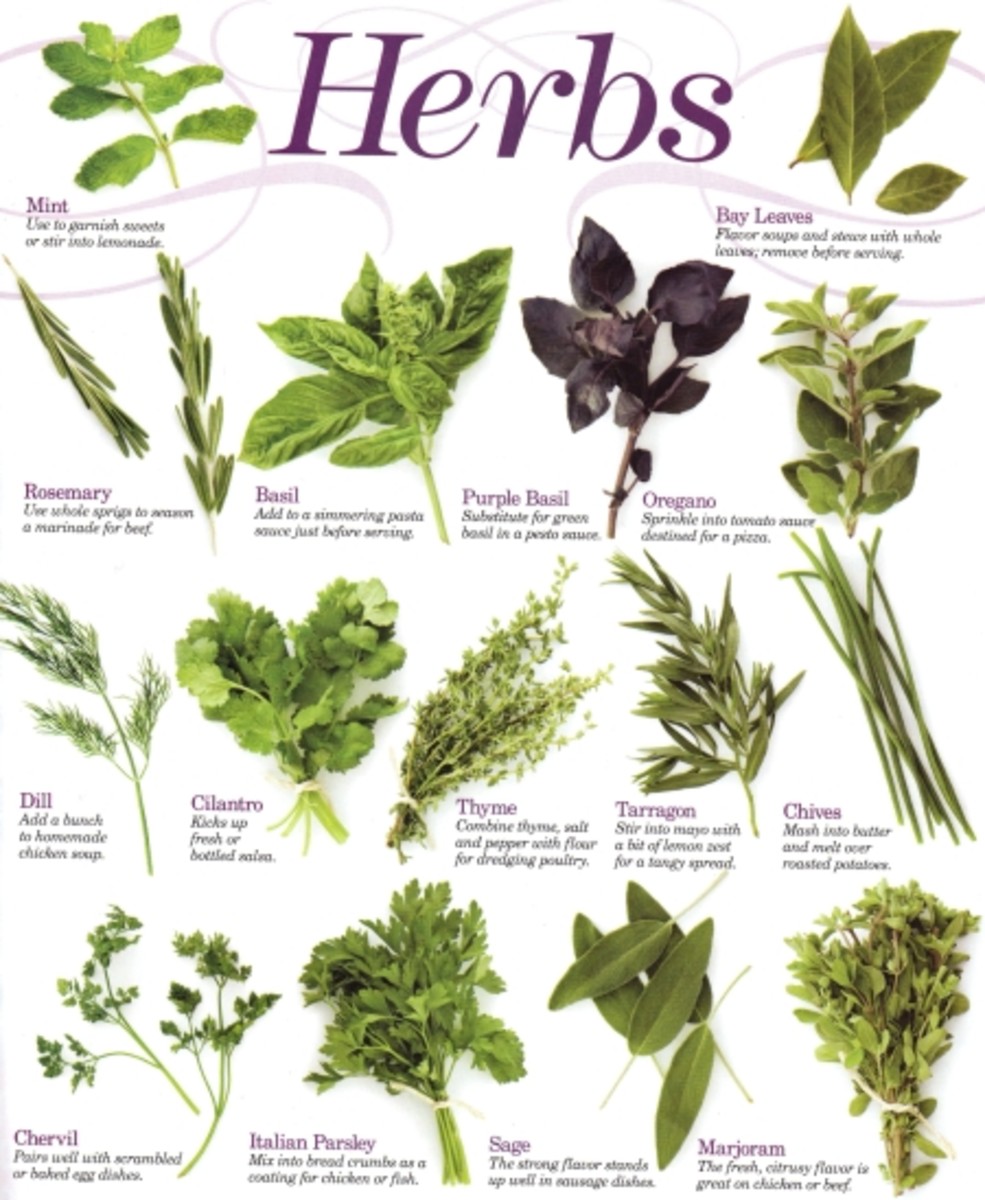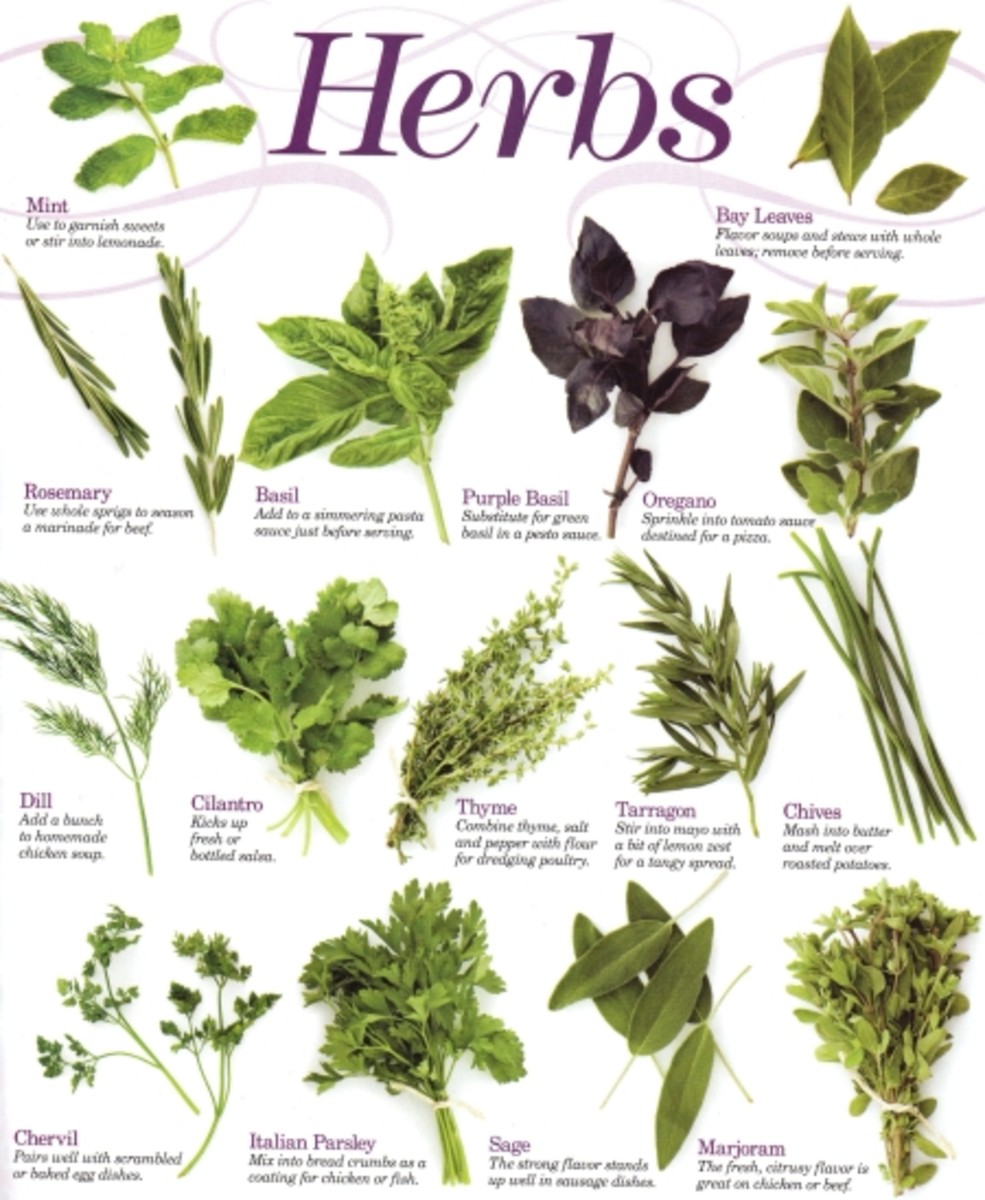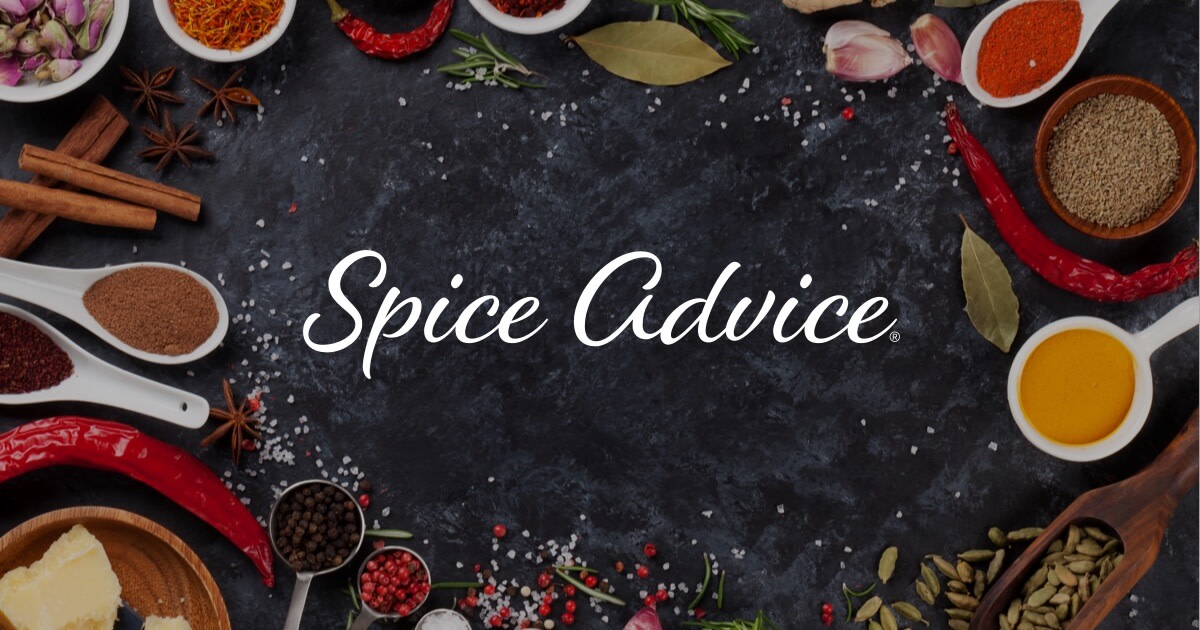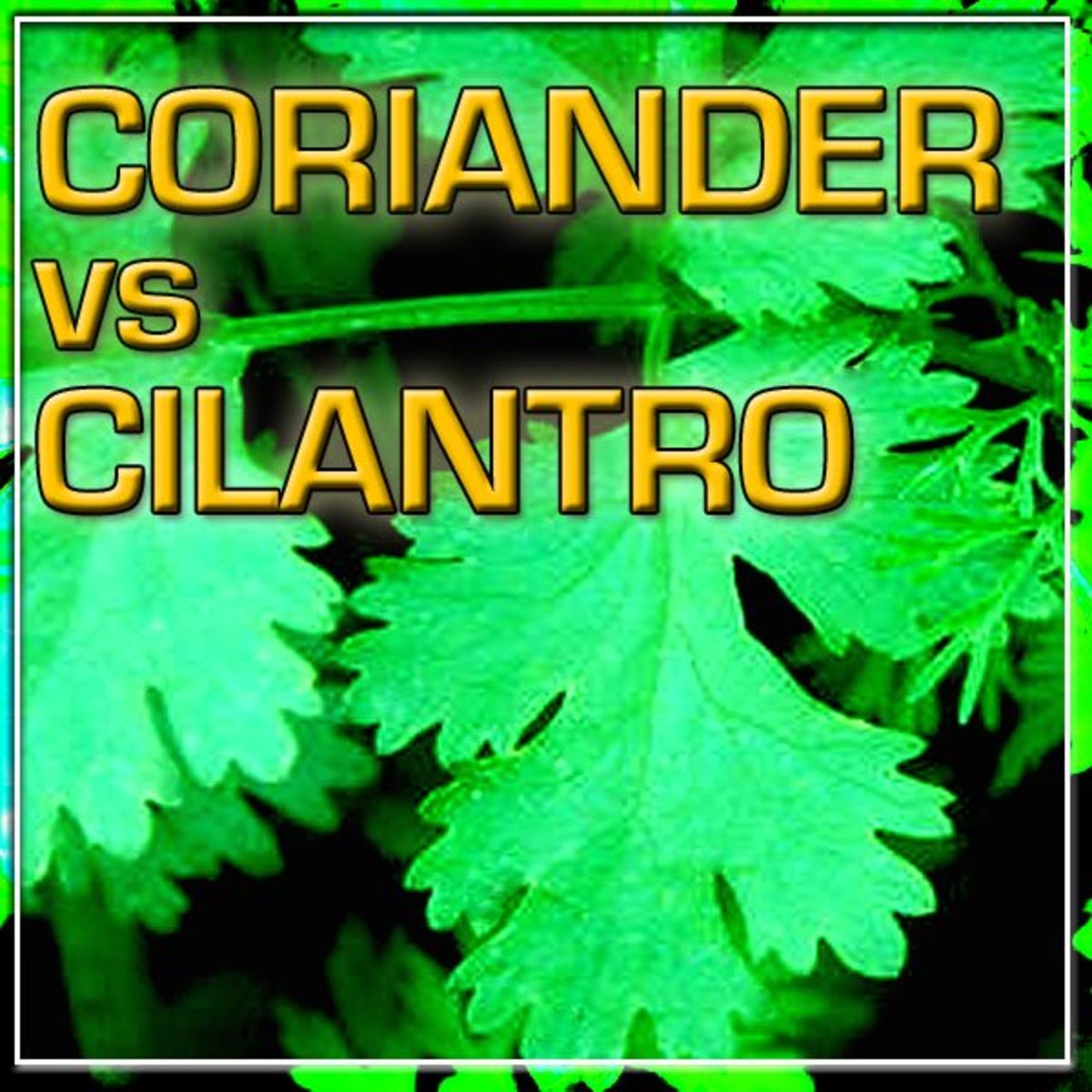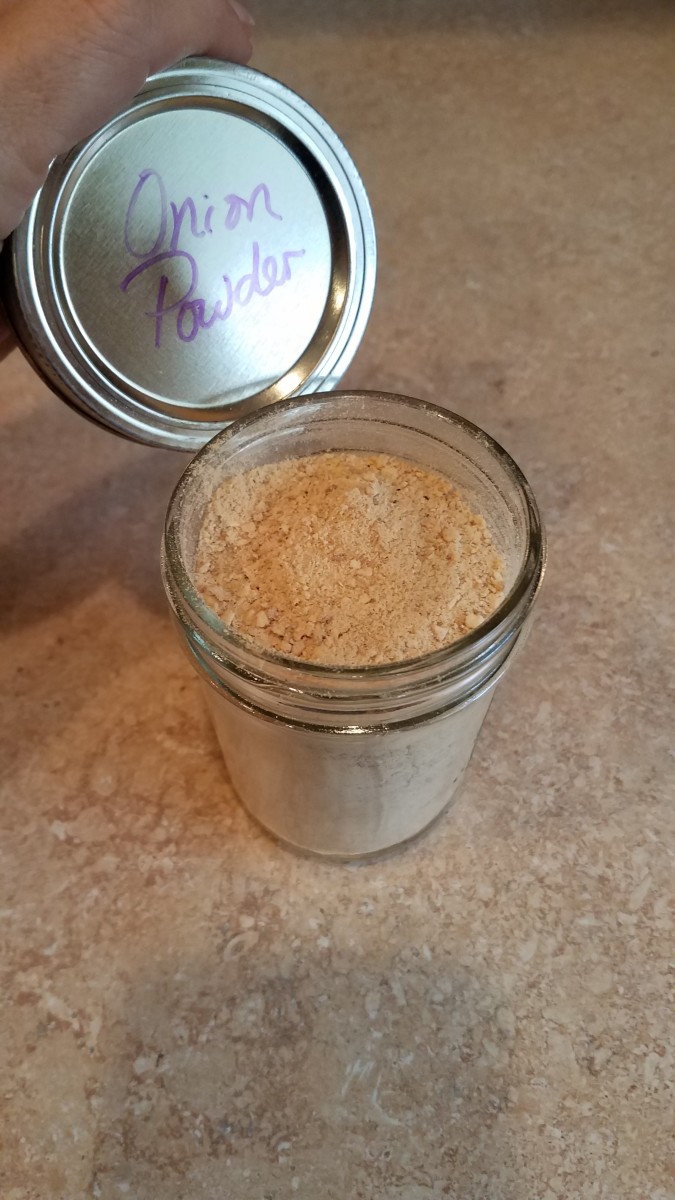11 Herbs Every Cook Should Have
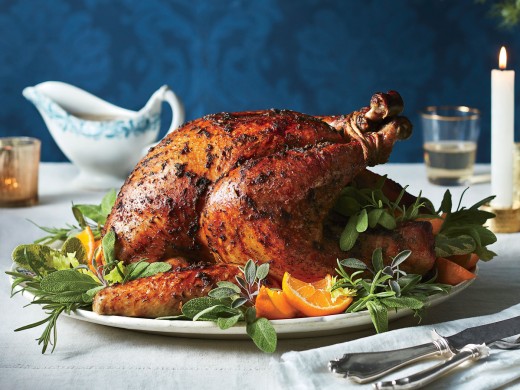
My Passion
I am a Mother, first. A full time freelance writer and blogger, second. And at last, a world renowned chef! At least in my eyes I am. I am a self- taught cook and I love it. Here is my philosophy: Good food, good life. To me, any full course meal from a box, can, or that is handed to me through a window literally makes me cringe. Nothing against those who eat like that and I have myself been a victim of the latter, but eating fresh is how I like to live my life and is how I want my kids to live theirs, too. They catch onto habits through you, so let's make sure they are good ones.
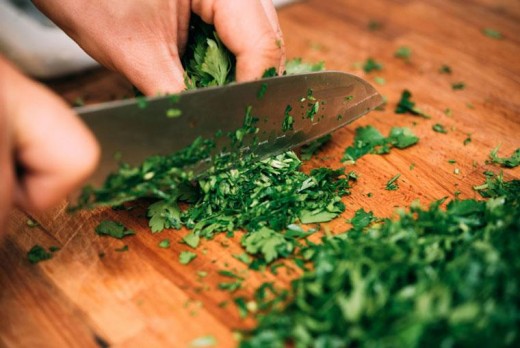
What You Talking Bout Willis?
Growing up in a family full of passionate cooks and who at one time owned a restaurant that served amazing, memorable food for the soul, I was constantly surrounded by delicious food. From dinner at the restaurant most nights of the week, my Italian Aunt who could whip up an 8 course delectable Italian dinner from nothing, to Sunday dinner with just the immediate family, one would think I could have been born with a spatula in one hand. But that could not be any further from the truth. Sure I did love to eat all that amazing food, but did I know HOW to make it? No sir, not the slightest clue. Sure Mom and Dad would give me tips here and there, but they are more of the "When I am in this kitchen, get the hell-outta-my-way" kind of teachers.
Throughout time I learned though, and so can you. And one of the first rules of cooking is learning about you ingredients and what exactly is going into your food. So, today's lesson is fresh herbs. Yep, those that you can grow right from your very own garden. To me, fresh herbs used to be the equivalent of a geometric algebraic equation wearing purple underwear making no sense whatsoever to me. Why do they all look similar? What possible flavor could a plant give your food? How and when do I use them?
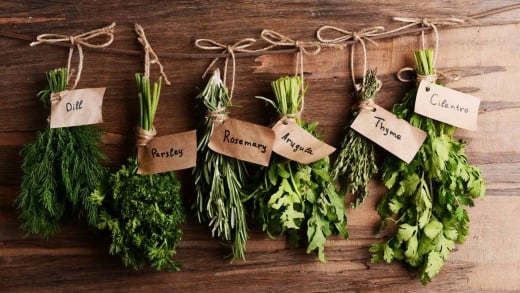
The Fresh Herbs Handbook
Fresh herbs are now a staple in any meal that I cook now that I have figured out the basics of what pairs best with them. I can never be without them in my cooking. They bring a flavor all of their own and these basics will help you along your way.
- Basil: A fragrant and peppery herb- a little spicy. You will find it pairs well with tomatoes, vegetables, poultry, pizza, and salads. It is best to use it as whole leaves or torn. The smaller leaves at the top of the bunch are the sweetest and to me, the best parts.
- Chives: This herb has a subtle onion flavor that I love. You will see that they have grass-like leaves. They are used well in any egg dishes, soups and sauces, baked potatoes, and fish. For best results, snip off with scissors. Chive flowers also make an elegant and pretty garnish.
- Cilantro: This fresh herb has a more lively flavor. The looks of it is very similar to those of another fresh herb- flat leaf parsley. It is used often in Asian, Indian, and Mexican cuisine. Also, Cilantro is amazing when used in salsas and chutney's. After the plant flowers, the leaves become more bitter. The dried seeds from Cilantro are the spice Coriander.
- Dill: Has a fresh and grassy taste and it's feathery leaves are an ingredient in pickle brine. Dill pickles anyone? This fresh herb is used in tuna salad, omelets, veggie dishes, seafood dishes, yogurt dressing for cucumber, herb vinegars, and my mom's famous Dried Beef Bread Dip( Recipe Below!). It is used fresh or added to hot food just before serving.
- Mint: A cool flavor that brightens up both savory and sweet dishes. You can use it in beverages, jellies, sauces, or marinades for meats and veggies. Or, try tossing it with buttered peas. The most popular variety of mint is spearmint.Plus, it is a a great ingredient to soothe an aching tummy.
- Oregano: A fresh herb with an earthy taste and is great at balancing out acidic flavors such as those of tomatoes, hence the reason the fresh herb in common on pizza. Oregano pairs well with lamb, beef, eggs, beans, eggplant, and of course tomato sauce. The fresh herb is also related to Marjoram, which is less pungent.
- Parsley: A fresh herb that is peppery, yet with a fresh taste. And this just so happens to be my favorite fresh herb whether I am using it as a flavor or a garnish. There is curly parsley and flat-leaf parsley. Curly parsley is milder then flat-leaf parsley. This fresh herb is used a lot in Italian salads, veggies(especially potatoes), and pasta.
- Rosemary: This fresh herb is pungent and has a bit of a pine flavor. It is very commonly used in Mediterranean dishes, lamb, poultry, pork, fish, and breads. You can add sprigs or finely chop the leaves to stews. My dad makes a famous Rosemary Pork Loin. Yummy!
- Sage: I call this fresh herb my holiday go-to. Just the smell brings Christmas cheer to my heart. But of course that is not all it is used for. This very aromatic and woodsy tasting fresh herb is used with fresh sausage, rich meats like pork, goose and duck. And of course, do not forget to put in that yummy stuffing for the the turkey!
- Tarragon: Smelling this fresh herb will remind you very much of licorice. Pairs nicely with poultry, fish, shellfish, veggies, vinegar, and eggs. French Tarragon is often preferred over the Russian Tarragon which is a bit more bitter.
- Thyme: A crusty and a bit minty fresh herb, Thyme is also used in many Mediterranean dishes, stews, eggs, seafood, and poultry. It is also nicely used in flavoring steamed rice when tossing the sprigs into the boiling water. Strip leaves from the stems by pulling through the tines of a fork.
How Do They Keep?
You can store fresh herbs up to several days by immersing the stems in 1-inch of water in a tall glass. Cover glass with a plastic bag and refrigerate. You can also freeze fresh herbs by removing the leaves from the stems, and rinsing and drying them. Then, place the fresh herbs in a heavy-duty sealed plastic bag for up to 6 months. Frozen fresh herbs will darken but retain much of their flavor.

Let Me Know!
Do You Use Fresh Herbs When Cooking?
Ready to Cook?
I am quite sure I did not make a 5 star chef out of you, but I would hope this view into fresh herbs will help all those puzzled beginner cooks as I once was. Remember Stressed spelled backwards is Desserts. A life in the kitchen can be crazy enough, but when you really know your ingredients and how to flavor, it can get a wide range simpler.
Early one morning the Mole family awoke and Daddy mole climbed to the
top of the mole hole and sniffed the air.
"I smell bacon frying." he said.
Momma mole crowded in beside him and sniffed the air,
"I smell eggs cooking." she said.
Baby mole tried and tried to get to the top but there was no room left
so he said, "All I can smell is molasses!"
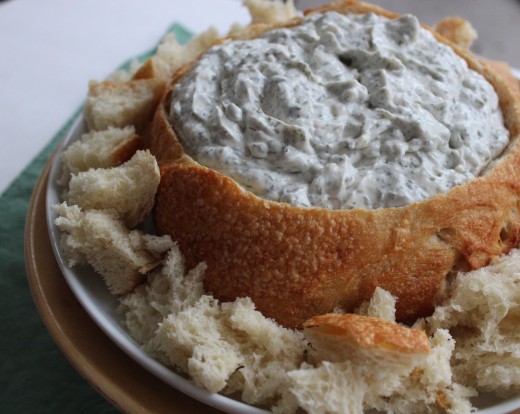
Thelma's Famous Dried Bread Bread Dip
YIELDS:3 1/2 cups
PREP:5 Min
CHILL TIME:1 Hr
A classic for parties, football, or a great appetizer. Enjoy this bread dip with chunks of bread, veggies, or chips!
What You'll Need:
- 1 pint (16 ounces) sour cream
- 1 1/3 cups mayonnaise
- 2 tablespoons dill
- 2 tablespoons parsley
- 2 tablespoons minced onions
- 1 (2.25 ounces) jar sliced dried beef, chopped (about 3/4 cup)
- 2 (1 pound each) round pumpernickel breads
What To Do:
- In a medium-sized bowl, mix all ingredients together except breads. Cover and refrigerate at least 1 hour.
- Slice top off 1 bread and hollow out bread shell. Pour dip mixture into hollowed-out shell. Cut second bread and top of first one into 1-inch chunks and use for dipping.
Notes
- If you want to give your dippers a dark and light look, use 1 pumpernickel and 1 rye bread.
© 2012 Brianna W


